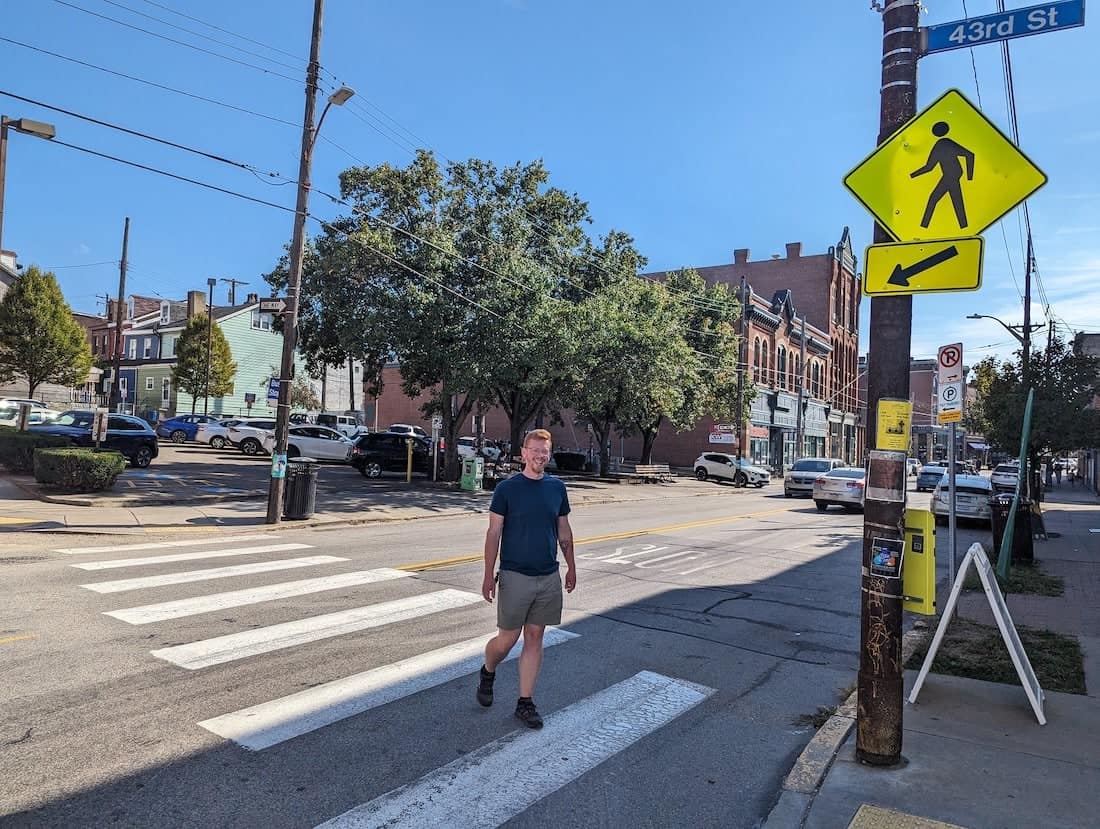
How can public policy affect and sustain systemic change?
As you may know, BikePGH’s Advocacy Manager, Seth Bush, has been enrolled in the 2023 Pennsylvania State Walking College Fellowship Program through America Walks and AARP. We’ve been interviewing him each month as he grows his skills to advocate for people who walk and roll in our communities.
If you missed it, check out our blogs from (Month 1) (Month 2) (Month 3) to get a recap of his experience, and continue reading below to get a closer look at how it’s all coming together on the ground here in Pittsburgh. This month is all about using public policy to affect and sustain systemic change.
Q: Welcome back, Seth! You already know what I’m going to ask… What did you learn at Walking College this past month?
Throughout the Walking College Curriculum, we’ve talked a lot about the history of transportation, as well as how community organizing can help us get the change we want to see. We’ve talked about using walk audits to identify problems and envision solutions. But how do we create more sweeping, lasting change that gets at the root of the entrenched car-culture that leads to unsafe walking and biking conditions? We need to change policy.
Of course, it’s incredible to finally get that speed bump installed after advocating for traffic calming in your neighborhood. But at the end of the day, there is a bigger picture: We need our local, regional, state, and even our national governments to address this pervasive problem of how car culture is affecting our quality of life and our ability to walk around our communities in a way that is safe and enjoyable.
Although our culture has been conditioned to rely on cars, we need to be asking: Is that really the best way for us to be designing our entire society? We’ve been learning at Walking College the numerous downfalls of designing everything around the vehicle. So, in this last module we’re really looking at how we can address systemic change through policy. This requires, first and foremost, to take a deeper look at mobility justice.
Q: Can you tell me more about why it is so important to consider mobility justice in tandem with policy change?
Setting the stage through that lens, we’ve talked about how a history of systemic injustice has shaped how our communities are designed– how certain communities are not able to get around in ways that they need to because of a history of oppression in the U.S.
If we just jump right into policy, we could make the mistake of actually further entrenching systemic injustice. Too often policy ends up being written to benefit corporate interests, putting profit over people. And/or, it serves to further white supremacy culture, favoring the status quo that is designed to best-serve white, able-bodied, cisgender, heterosexual men — leaving everyone else at the margins. So it’s really important that as we start to look at policy, we look at okay, how are our choices made? What are the structures in place for how we make decisions in our society? How are our systems affecting a diversity of people? And with that, we need to have all of the people at the table.
As we’re developing policy, there’s no one size fits all approach to transportation– addressing barriers, why people choose the modes of transportation they do, and what barriers get in the way of moving freely. It’s going to look different city to city, neighborhood to neighborhood. We need to understand how those barriers and opportunities are influenced by historic oppression, including racism, ableism, and sexism, so that when we advocate for a certain policy, we’re more acutely aware of the impact that policy could have on the community. For instance, we’re not just making a general declaration that “We need Complete Streets,” but instead, we’re including disability justice, public transit, even street trees, so that ultimately the community benefits and it can access the resources needed to thrive, rather than being further marginalized or having their neighborhoods gentrified.
As it stands, many of this country’s policies fail to actually protect the people that we were improving the community for in the first place, and then they get forced out through gentrification. Policy is going to have to be tailored to a given community so it benefits the people there for the long term. When we make communities more pleasant to walk and bike, then all of a sudden property values go up. So, it’s not enough to just make a community better to get around, you need to do it in such a way that the people who live there can afford to stay there, especially for Black and Brown communities. It’s incumbent upon us as advocates to include everybody at the table who’s going to be impacted by policy.
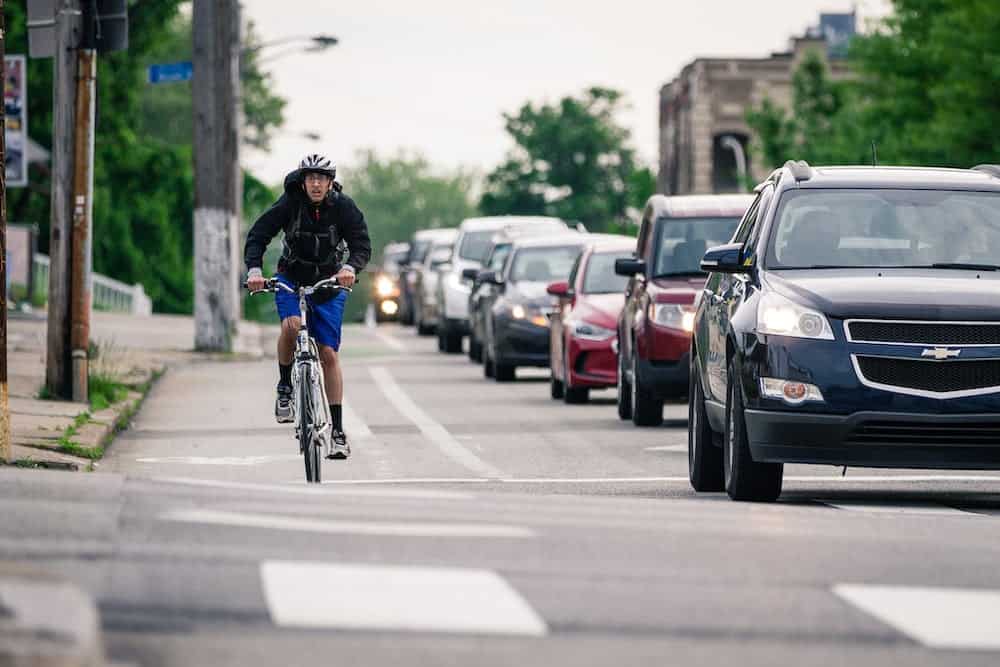
Q: Can you contextualize this idea of public policy for us and how it serves to reinforce car culture in the U.S.?
We talked broadly about how our current federal, state and local policies give preference to cars and perpetuate car dependency. We need to be asking questions such as, why do we still have zoning laws that disincentivize higher density residential areas? Why mandate that every building have so much parking, taking up so much land space, that we can’t effectively design for people?
“Americans shouldn’t have to drive but the law insists upon it.”
– Gregory H. Shill, The Atlantic
In this way, we can’t have the degree of density that might actually support a more walkable community. For instance, even our tax code incentivizes people to drive: parking spaces can be a tax write-off, but walking and biking and even taking public transit is not an easy tax write-off for businesses.
Similarly, we’re starting to incentivize electric vehicles in the United States, but where are the incentives for public transportation and electrifying public transportation? Why are we structuring our policy this way? Why are our cars in the U.S. regulated to protect occupants and not vulnerable road users outside of the vehicle? And how could we subsidize active transportation and public transportation so that we can increase demand for these modes of transport?
Q: What are some policies that can be used to incentivize active transportation?
Complete Streets requires planners and engineers to design streets for all types of users, so that it’s not just motor vehicles, but also cyclists, pedestrians, transit riders, blind people, wheelchair users, children. There’s the principle of designing a street for ages eight to eighty, and for designing the street for people who have a diversity of accessibility needs. But it means having local governments make a commitment to designing streets in this way.
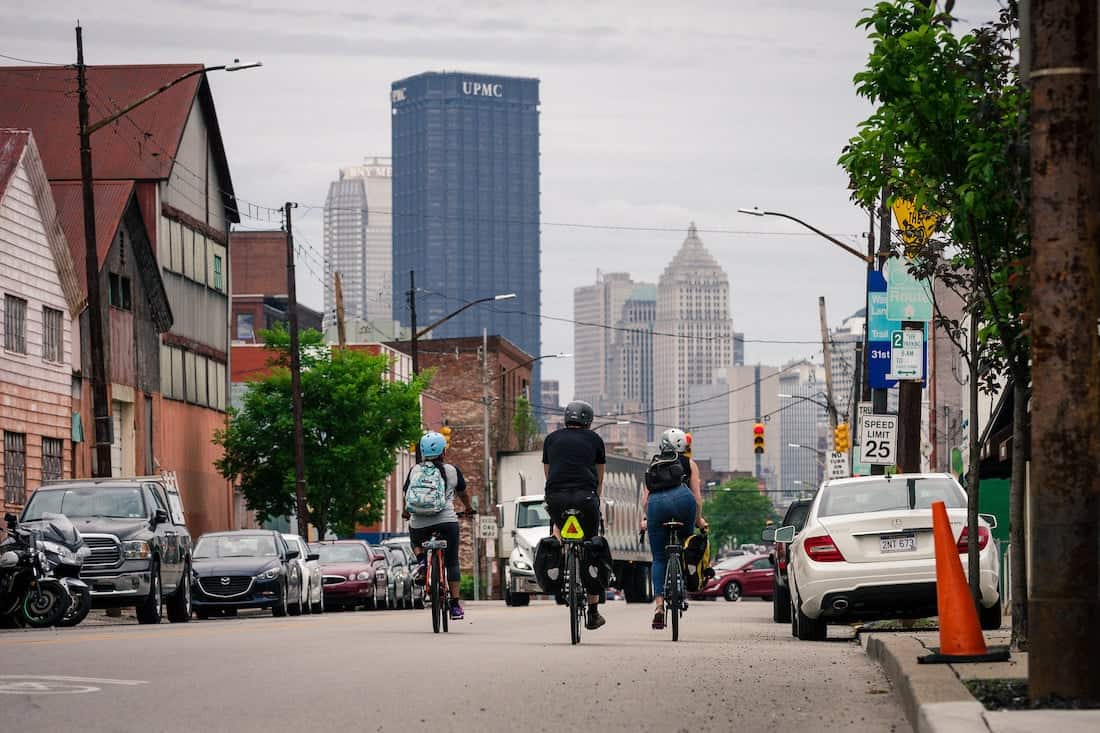
Thinking about Active Transportation Plans is another piece of policy, which is not such a hard and clear and mandatory policy as Complete Streets is, but having an Active Transportation Plan for your community is the first step to be able to apply for funding to improve your community’s access to safe walking. When a funder (like the state or federal government) sees that your municipality has an Active Transportation Plan, that shows that you want people to be able to get around outside of the car. When there’s a clear statement of that priority, then it’s easier to get money to invest in infrastructure.
Another policy strategy we talked about was zoning. Disappointingly, our zoning code is written in such a way that supports isolated, siloed uses instead of a mixed uses. Isolated uses requires us to travel long distances to and from home, work, shopping, and school, instead of having that all integrated in a connected and convenient community. This gets into gentrification territory too, so we have to be really intentional and really mindful and really careful about how we’re designing for people, not profit.
Smart Growth America: Have we zoned great walkable places out of existence?
Q: How does this all connect to some of our local policy and BikePGH’s work?
Some of the stuff that Bike Pittsburgh has been advocating for here locally are the policies of Complete Streets and Vision Zero. In the City of Pittsburgh there has been a Complete Streets commitment here, and also in some of our neighboring communities such as Dormont.
Another piece of policy that is also really important and that we’re working on advocating for in Pittsburgh is Vision Zero, which sets the goal of zero traffic deaths by a certain date. It mandates that the local government come up with a plan for how we’re going to get there. BikePGH is currently in communication with the Mayor’s office on how to get our city’s VZ policy in place.
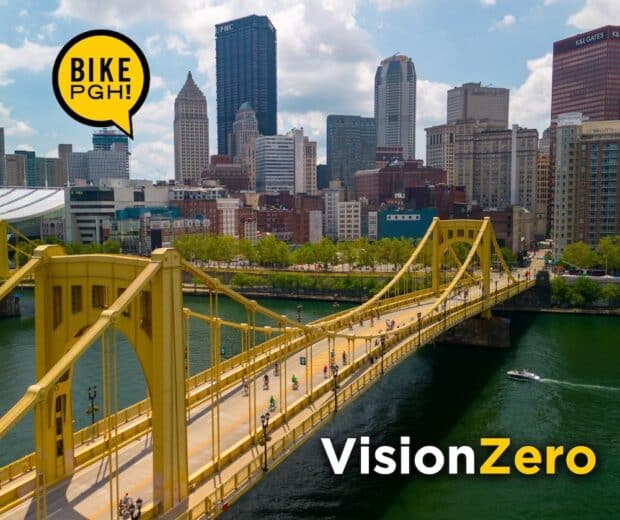
We’re also in the Capital Budget process right now. One of the most reliable ways to make Pittsburgh better for biking and walking is to make sure that projects that improve biking and walking are included in the Capital Budget. The Capital Budget is largely a city’s budget for infrastructure, paving, street design, traffic signals, traffic calming, etc. Mayor Gainey has published his Draft Capital Budget for 2024, and his office has scheduled public meetings to present and talk with communities about what could be changed before it’s finalized. It’s really important for us to show up to these meetings to help make the case for safe biking and walking. Also, if there are things that are unclear, these meetings give us the platform to go show up in person and ask those clarifying questions about what is and what is not line itemed out in the current Capital Budget draft.
Q: Do you have any interesting resources to share with us for this month?
> Check out all my learning lists and notes from each week:
- Week 13 was about using public policy to affect systemic change.
- Week 14 was about Complete Streets & Vision Zero, specifically.
- Week 15 covered a smattering of other policy strategies including zoning.
> Gentrification & Neighborhood Change: Helpful Tools for Community –gives strategies for addressing pressures of gentrification
> How Parking Ruined Everything
Q: What’s next?
I recently submitted my Walking Action Plan, which completes my 6-month fellowship at the PA Walking College! This uses everything I’ve learned this far in Walking College – the walk audit, campaign strategies, assessing policy, developing relationships with key partners and decision makers, and more. I’m going to be working on implementing my Walking Action Plan and installing some traffic calming on Woodstock Ave in Swissvale. But more so, I’m going to be taking what i’ve learned from from this in bringing it to communities all over the city through my work with Bike Pittsburgh and beyond.
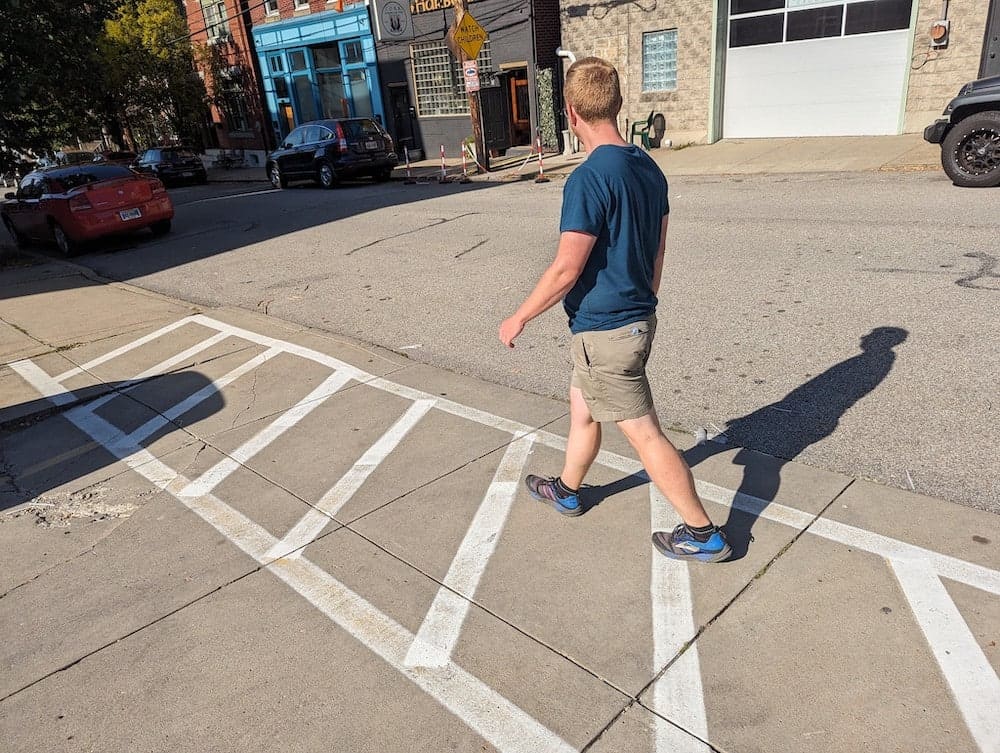
Thanks, Seth, for once again sharing this all with us as you continue your learning at PA Walking College! For our final post in this series next month, we’ll be celebrating Seth’s graduation from Walking College and hearing how what he’s learned can be applied to BikePGH’s ongoing work.
P.s. If you want to get involved locally, one thing you can do right now is to show up to the upcoming Capital Budget meetings and use your voice to get safe biking and walking projects funded.